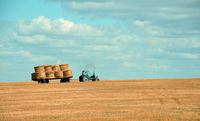Recent Posts
Pre-keyed shafting
Posted by on

In the late 1880s, the problem of eliminating friction and maximizing the transmission of torque between the moving motor and the load bearing shaft became very important. The keyed shaft was the straightforward solution. The idea is simple, the motor would have a key built into it. The shaft would have a keyway into which the key would slide. The key-keyway fit reduces the need for extreme tightening of the shaft to the motor and transmits the motion of the motor horizontally against the wall of the key which reduces friction and improves torque. The system came to be called a keyed joint.
Keyshafting is a variation of sprocket drive technology, where each tooth or cog on a driven shaft is joined with a counterpart on another shaft or belt in order to transmit torque.
A variety of keyed shafting types:
Sunk keys can be rectangular, square, parallel sunk keys, gib-head, feather, and Woodruff.
- A Woodruff keyed joint consists of a semicircular shaft profile fitting into a semicircular pocket in the motor. Woodruff keys are often used in high-speed motor connections.
- Parallel keys are most often used. A rectangular slot is precision cut into the shaft forming the keyway. The drive has a male component which slips into the keyway. Often a set screw is employed to tighten the mating hub against the shaft.
- The Scotch or Dutch key is more simply manufactured. A hole is drilled axially into the extension of the motor that will receive the shaft and the shaft itself. A round or tempered key is then hammered through the hole to join the motor and the shaft. The key is referred to as a pin.
The Making of Keyed Shafts:
There are a number of methods of "keyseating," creating slots and keys. All involve precision cutting or routing of metal. Keyseating is generally done on cold steel. Using steel below the temperature of crystallization (called cold-drawn steel) makes the steel harder.
- Keyseaters, also known as keyseating machines or keyway cutters are precision industrial machines that feeds the shaft to be keyslotted to a cutter (either the workpiece moves to the cutter or the cutter moves to the workpiece).
- Wire-cut Electrical Discharge Machining (EDM), used for very precise small production and extreme precision keyslotting, erodes material away from the workpiece using a series of rapid electric discharges between a spooling wire and the metal workpiece through a dielectric liquid. These machines cut very slowly and very precisely and can only accommodate relatively small shafts.
- Broaching is more expensive than most alternatives because it involves considerable hand operation. A broach or cutter is pushed against the workpiece as it is mounted in a press.
- Milling machines can also be used to create parallel, Woodruff or tapered keyways.
- Chiseling is one of the earliest ways of keyseating. The keyay is simply roughed out with a chisel then filed to size. The process is rarely used today because it is long, tedious and less exact than powered methods.
Pre-Keyed Shafting:
The sizes and forms of shafts have become increasingly standardized. They can commonly be bought in standard diameters ranging from 3/8 inch to 2.5 inches and lengths from 3 feet to 24 feet. Materials are generally carbon steel or stainless steel in the full range of types. They can also be customized in special shaft sizes, key sizes and configurations to fit any equipment.
The availability of pre-keyed shafts avoids the expense of keyseating for standard machinery. Often shafts are sold with collars to join keyed shafts to the machinery. The collars are keyed to the shafts and come with set screws to couple them to the driver.
The Big Bearing Store is celebrating 10 years of online service. We have become one of the largest distributors of power transmission products and bearings. Please contact us to learn more.

